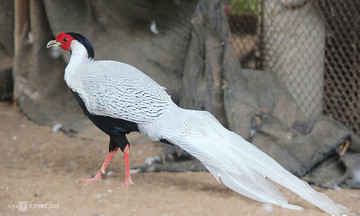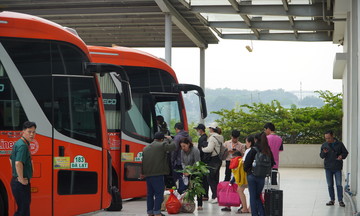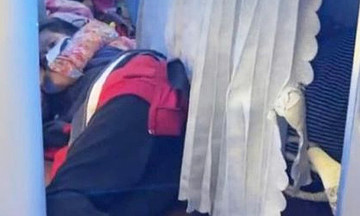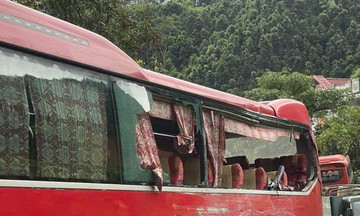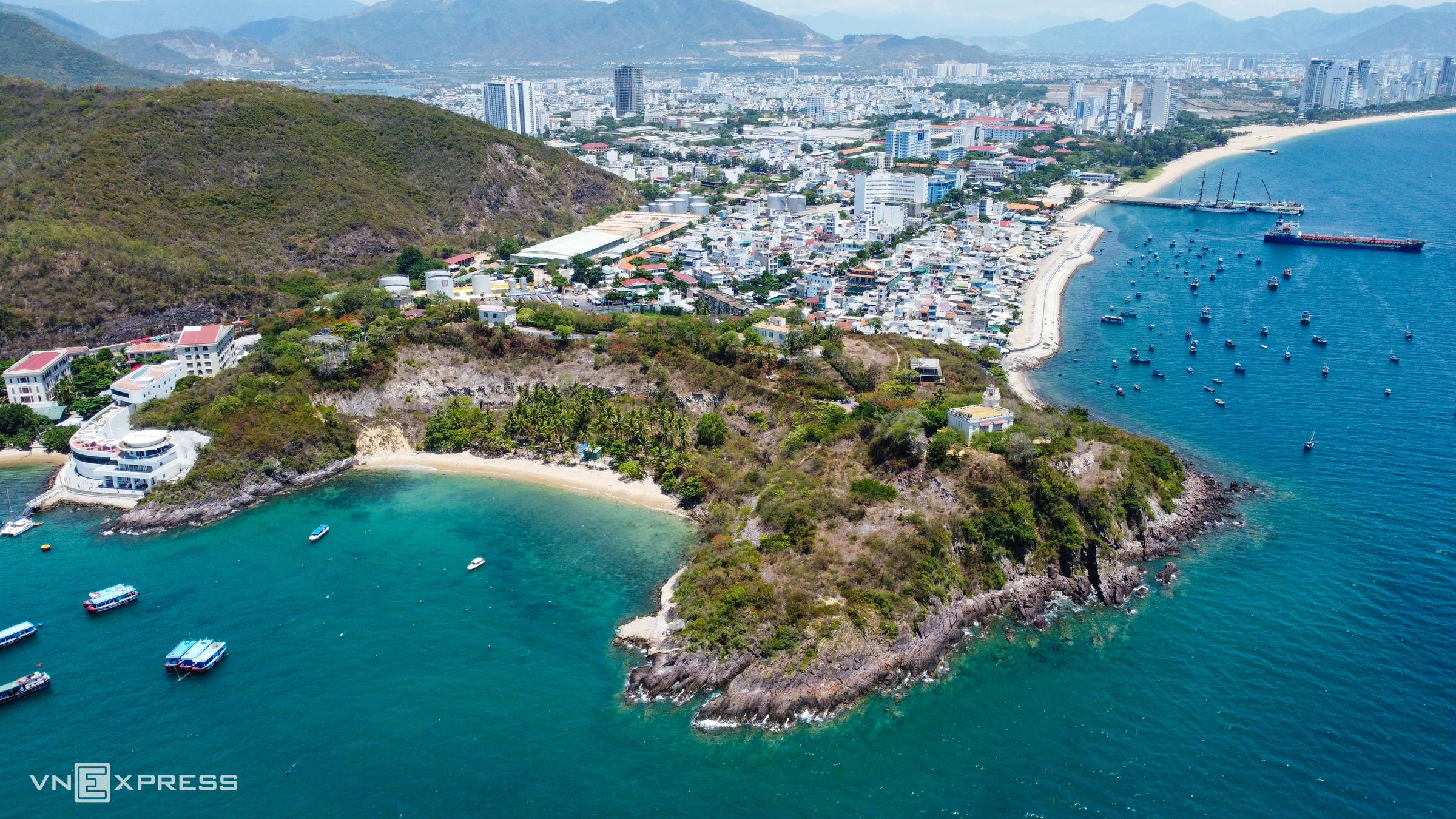 |
The Xuong Rong villa, offering panoramic views of Nha Trang and the bay, is architecturally the most impressive and features access to the beach and pier. Today, the area surrounding the villa is overgrown and deserted. (Photo: Bui Toan) |
Built by the French in 1923, the Bao Dai complex, also known as the Cau Da villas, consists of five villas: Xuong Rong (Cactus), Bong Su (Plumeria), Bong Giay (Bougainvillea), Phuong Vi (Flamboyant), and Cay Bang (Banyan). These French-style villas include a private beach and pier once used by Empress Nam Phuong. Emperor Bao Dai and Empress Nam Phuong frequented the villas between 1940 and 1945, leading to the complex being nicknamed the Bao Dai villas.
The site was designated a national historical-cultural relic and scenic spot in 10/1995. In 6/2024, the Cau Da villas within the complex received provincial recognition as an architectural and artistic relic.
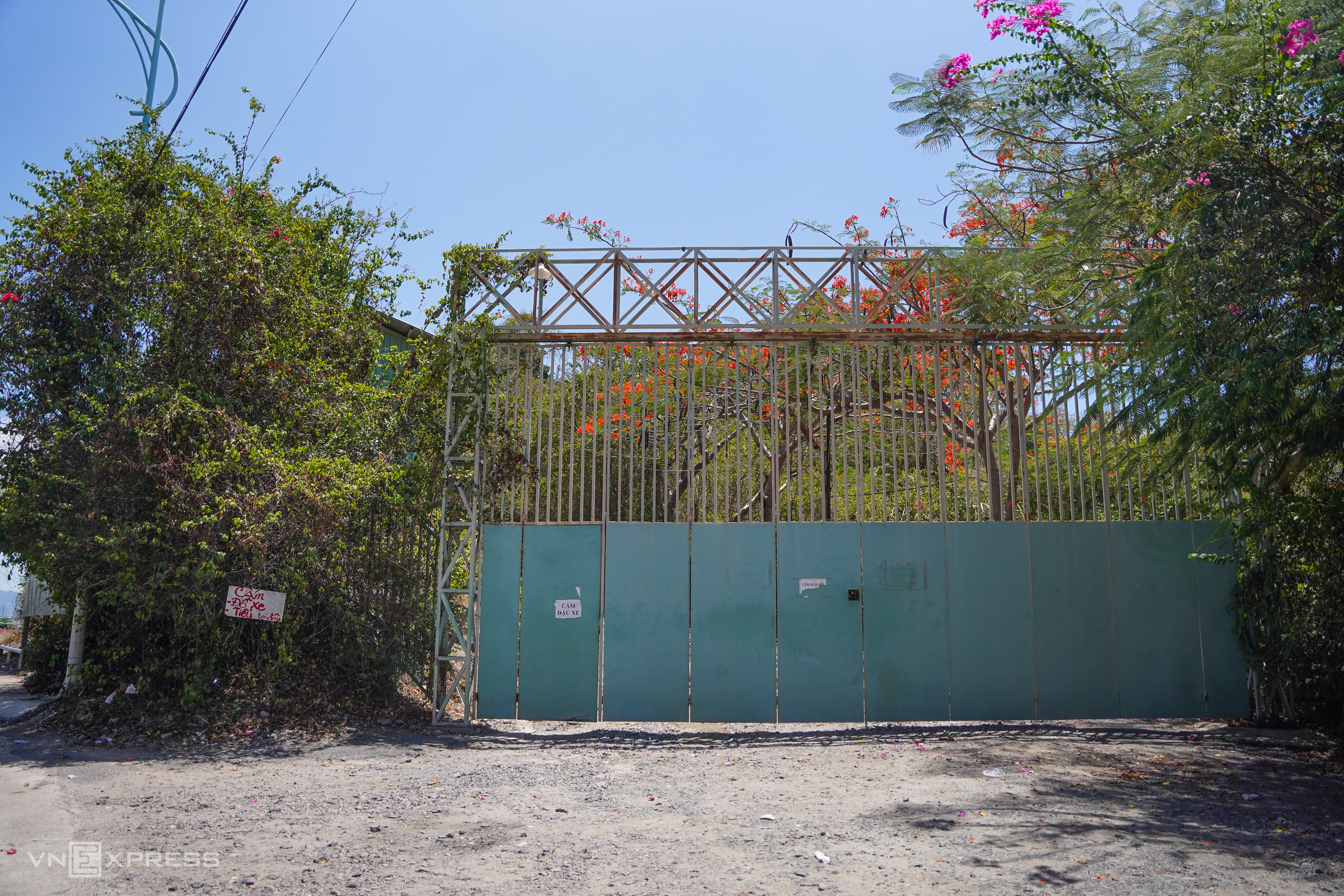 |
The Cay Bang villa, neglected for years, shows severe roof damage. The nearby Bong Giay and Phuong Vi villas are similarly dilapidated, with significant structural damage. The surrounding landscape is scarred by the unfinished resort project, creating an unsightly scene. (Photo: Bui Toan) |
 |
Emperor Bao Dai's bedroom with bedding that doesn't match the original artifacts, photographed in 2019. (Photo: Bui Toan) |
Once open to the public (pictured later), the complex is now closed off, accessible only through a single, guarded gate.
In 8/2013, the provincial People's Committee (UBND) approved a detailed plan for the site, allocating 13.6 hectares of land (including 8.9 hectares for the historical site and Canh Long Mountain, and the remaining area in Nha Trang Bay) to Khanh Ha Company for the Bao Dai High-Class Resort project.
The company planned to renovate the five villas for tourism rentals, construct a new hotel, restaurant, marina, and 36 villas for sale. However, the project faced numerous violations, leading to fines and a construction halt by the Department of Construction in 2017. Since then, the five villas have been abandoned and have fallen into disrepair.
In early 2023, the investor returned the land containing the five villas to the local government for restoration and preservation. The provincial UBND reclaimed over 9,200 m2 of land and entrusted its management to the Relic Preservation Center.
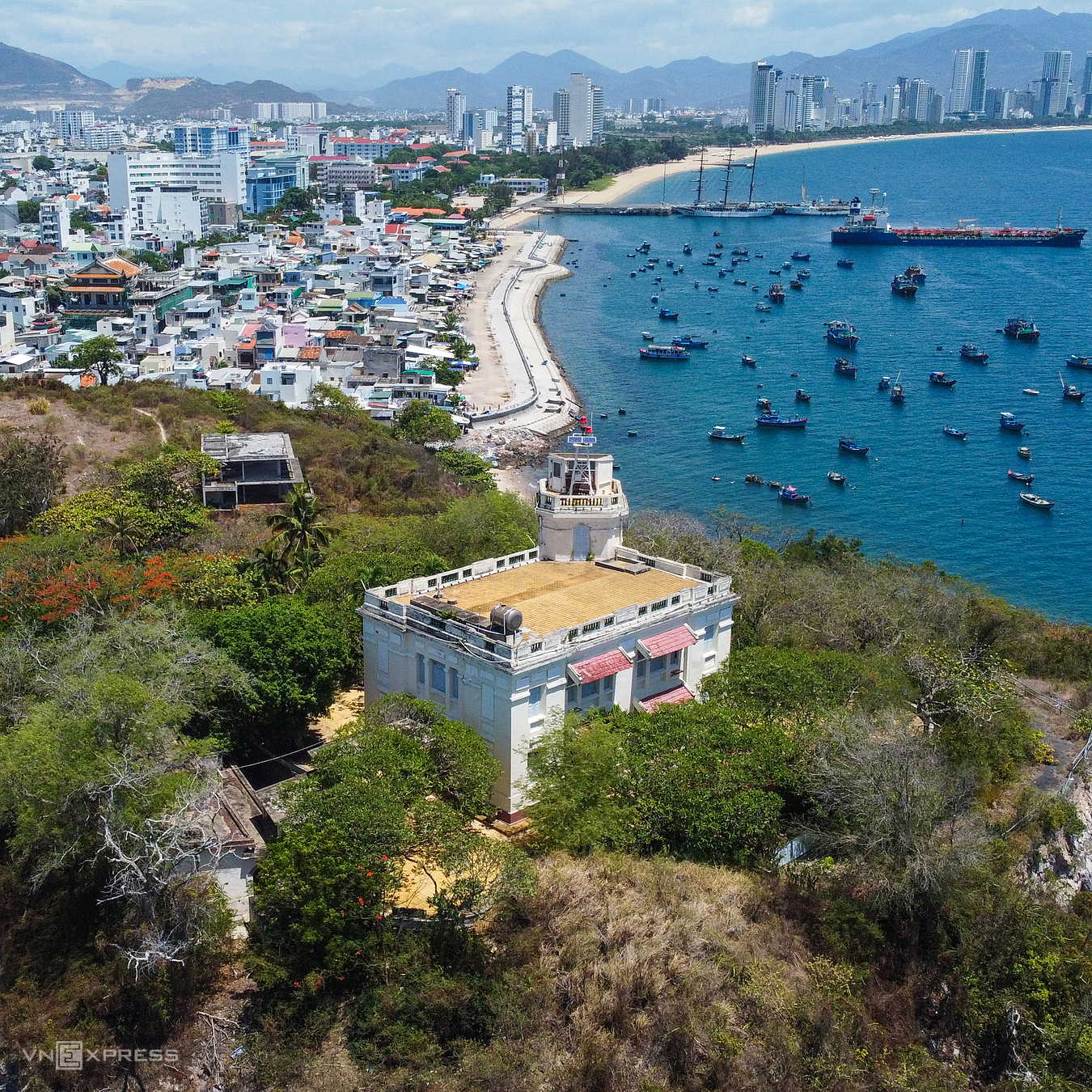 |
Damaged areas like the roof and restrooms await repair, photographed in 2019. (Photo: Bui Toan) |
The Xuong Rong villa, offering panoramic views of Nha Trang and the bay, is architecturally the most impressive and features access to the beach and pier. Today, the area surrounding the villa is overgrown and deserted. (Photo: Bui Toan)
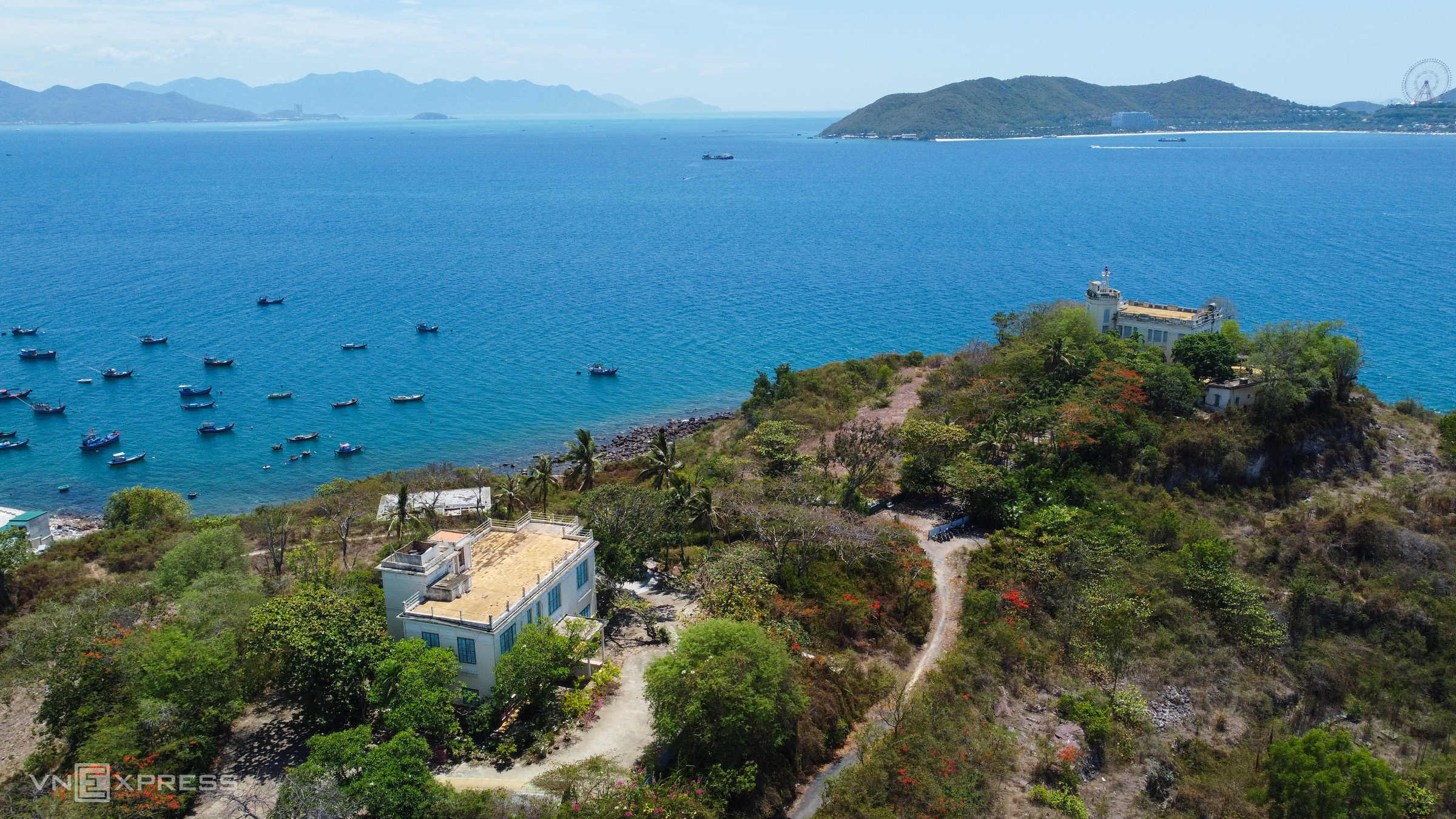 |
The desolate scene at the Bao Dai complex contrasts sharply with the bustling activity of boats and tourists in 2013. (Photo: Bui Toan) |
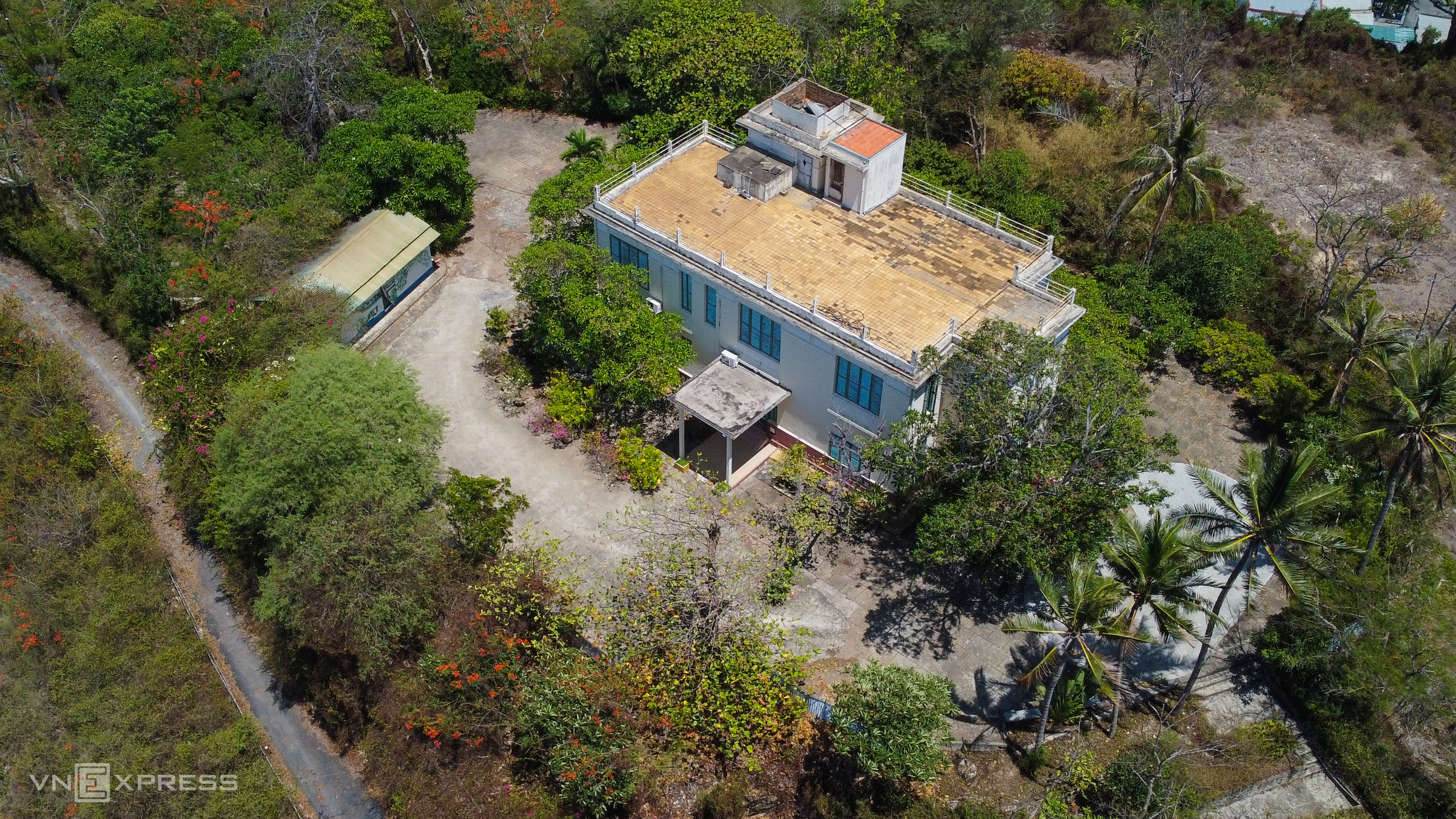 |
Nearby, the Bong Su villa retains its classic charm. This villa served as Emperor Bao Dai's family residence from 1940 to 1945. The first floor housed meeting rooms for receiving guests, the second floor served as the emperor and empress's private quarters, and the rooftop terrace offered a place to enjoy the breeze and moonlight.
In early 7/2025, the Relic Preservation Center proposed using the Bong Su villa to house two officials. However, the provincial Department of Culture, Sports, and Tourism deemed the proposal flawed due to a lack of consultation with department leaders. They demanded a review and clarification of responsibilities for all involved individuals and groups.
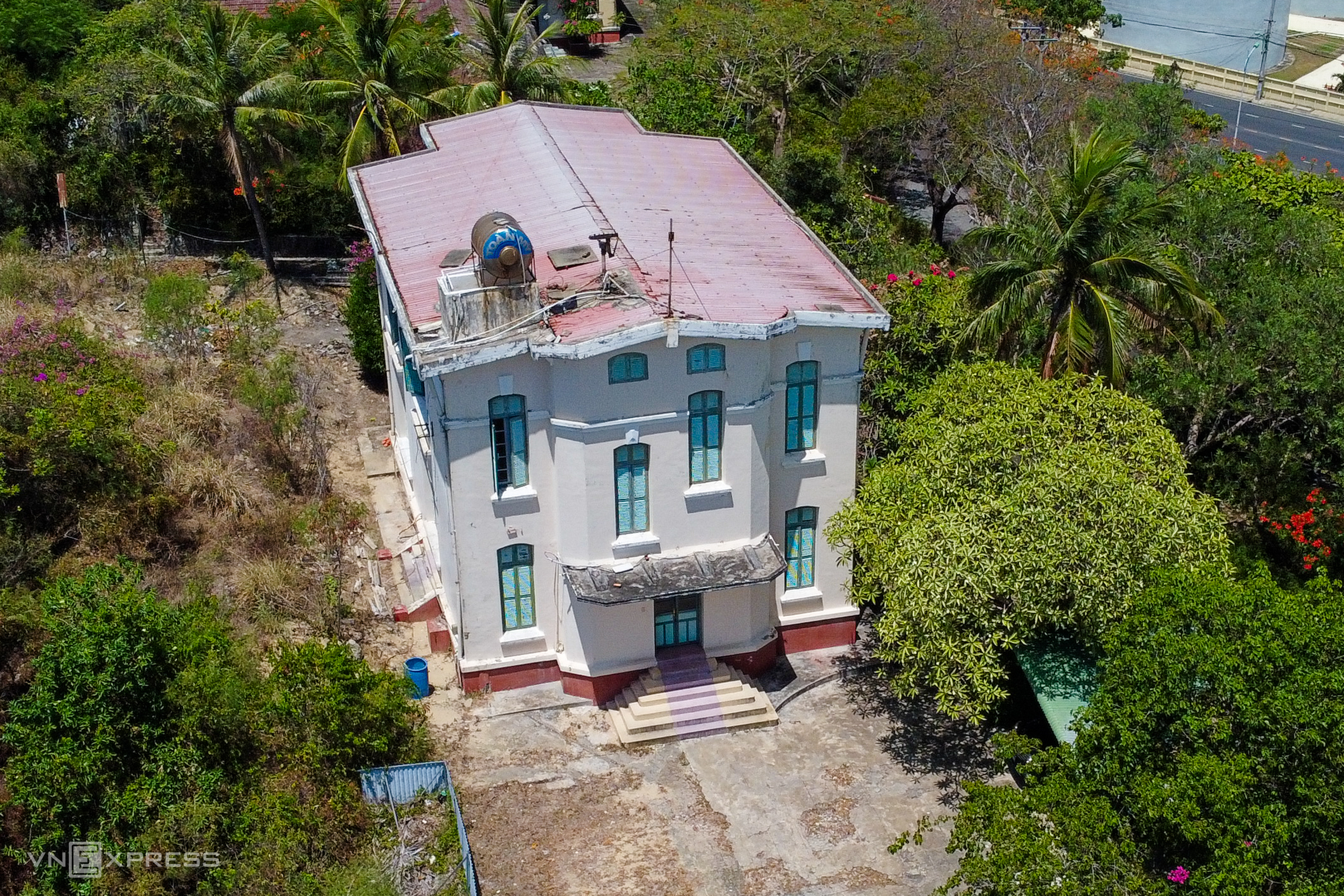 |
 |
Located centrally within the complex, the Cay Bang villa shows significant deterioration, with peeling walls compared to photos from 2013.
In May, Khanh Hoa's Department of Culture, Sports, and Tourism proposed an investment plan to restore the Cau Da villas. However, the project is stalled due to unresolved issues concerning the division of transportation and technical infrastructure within the larger Bao Dai High-Class Resort project.
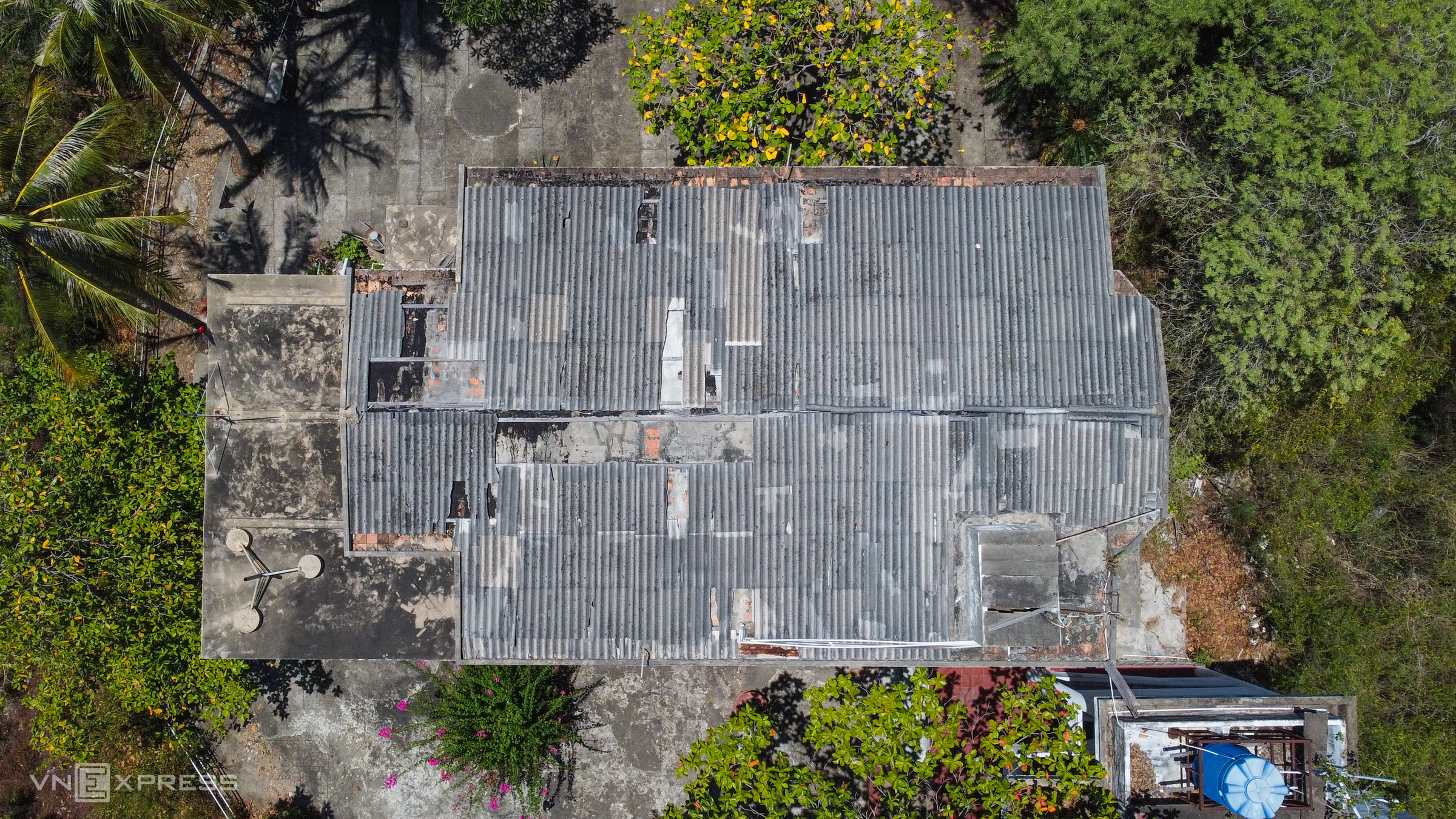 |
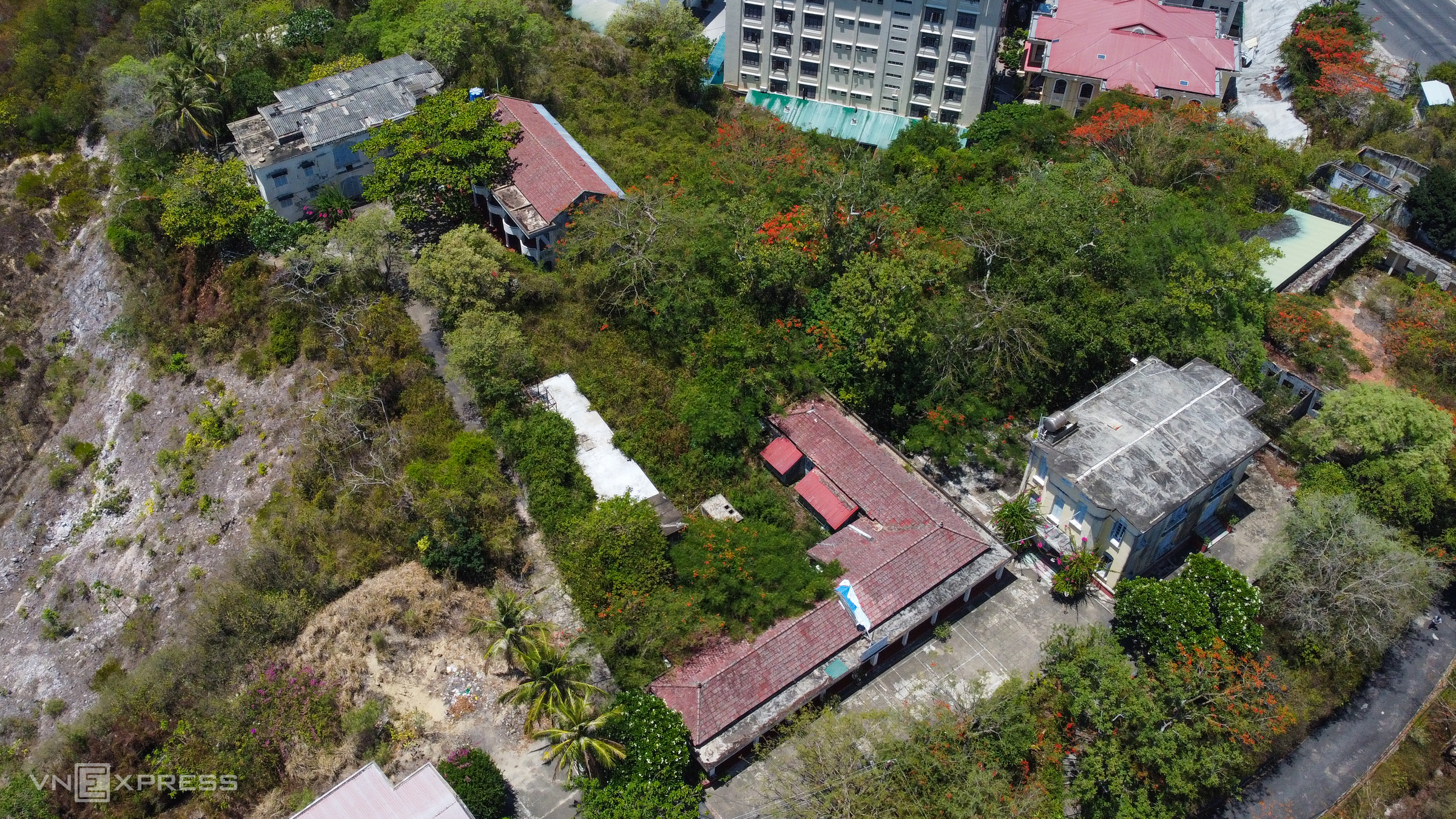 |
The Cay Bang villa, neglected for years, shows severe roof damage. The nearby Bong Giay and Phuong Vi villas are similarly dilapidated, with significant structural damage. The surrounding landscape is scarred by the unfinished resort project, creating an unsightly scene. (Photo: Bui Toan)
 |
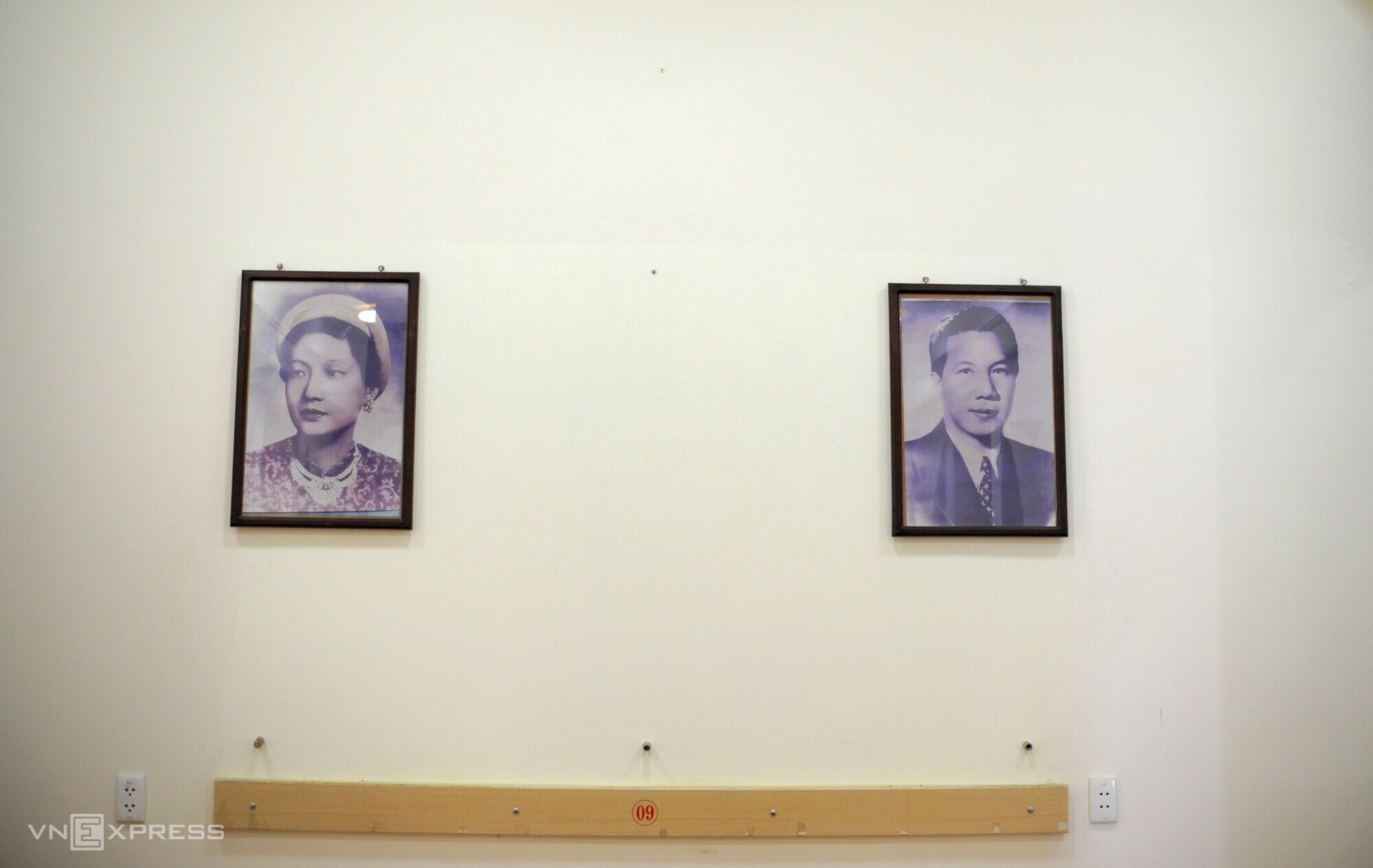 |
Artifacts such as tables, chairs, cabinets, and photographs of Emperor Bao Dai and Empress Nam Phuong inside the Bao Dai complex in 2019.
During the initial phase of the Bao Dai High-Class Resort project, public access to the villas and artifacts was restricted. Following government intervention, the complex reopened in 4/2019.
 |
Emperor Bao Dai's bedroom with bedding that doesn't match the original artifacts, photographed in 2019. (Photo: Bui Toan)
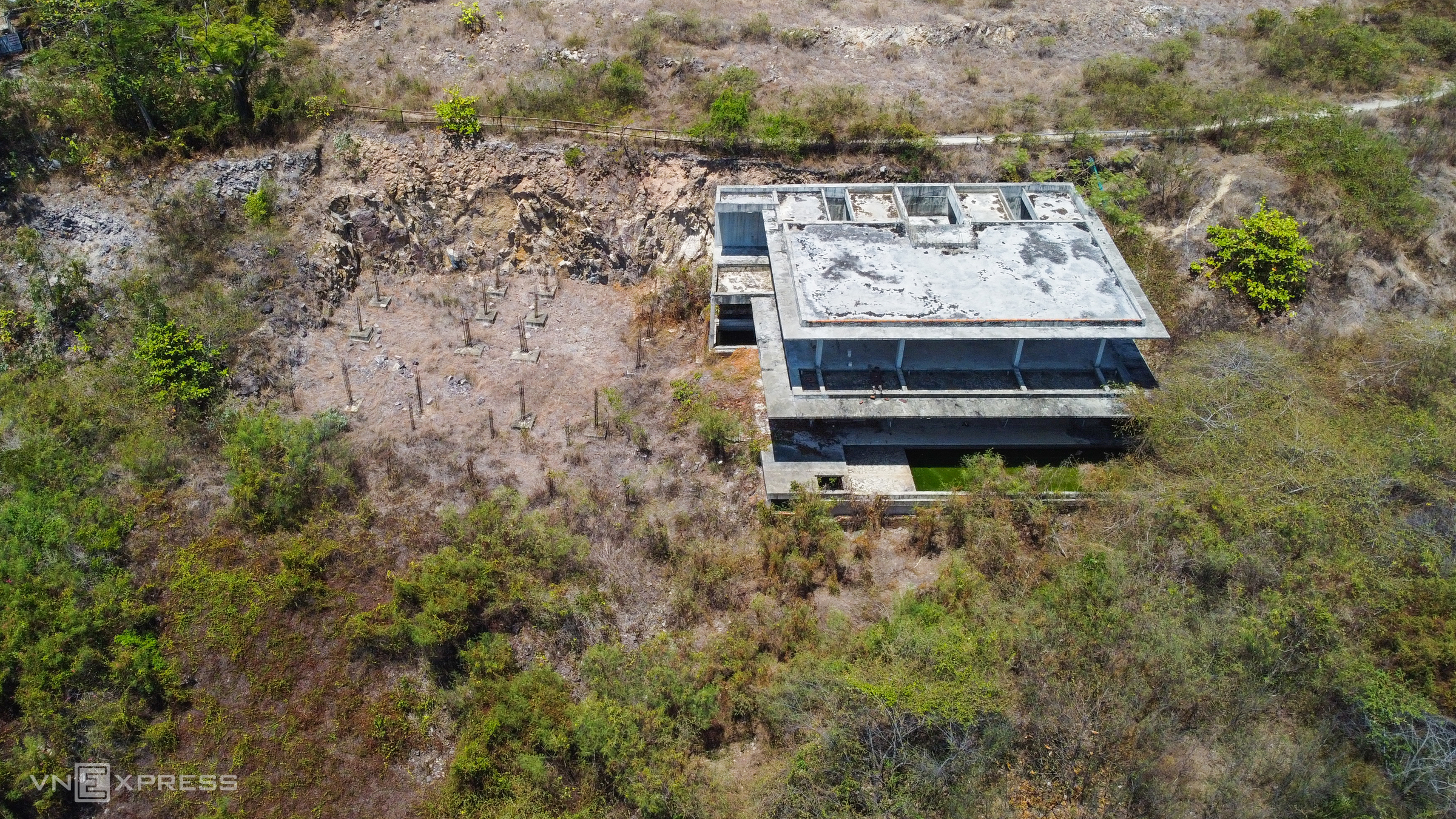 |
An unfinished structure within the abandoned Bao Dai High-Class Resort project, halted since 2017. Rusted steel and deteriorating structures are evident after years of neglect.
This project is among those Khanh Hoa province has reported to the central government, seeking solutions for its numerous violations.
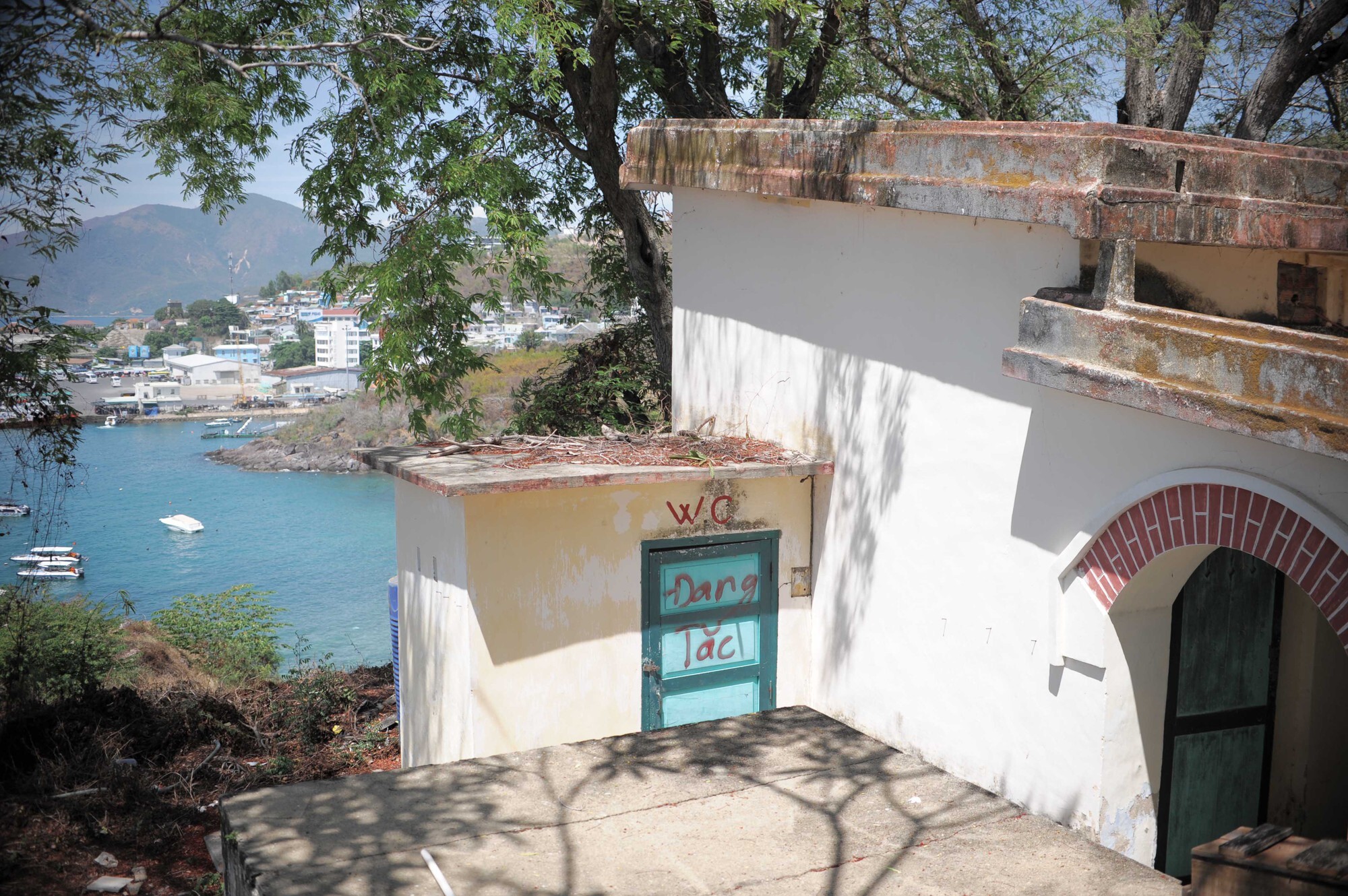 |
Damaged areas like the roof and restrooms await repair, photographed in 2019. (Photo: Bui Toan)
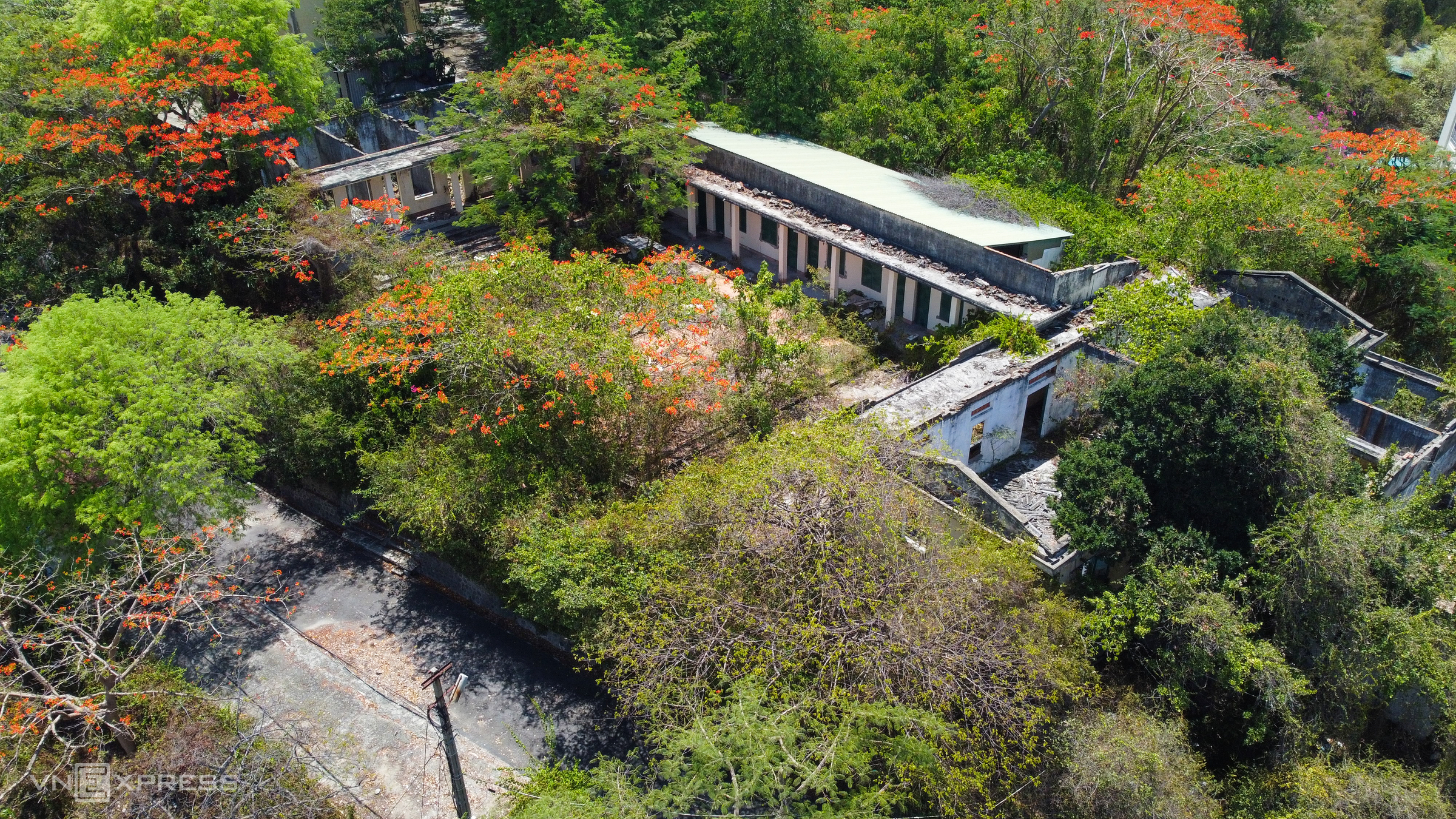 |
Buildings within the Bao Dai complex. Some areas on Canh Long Mountain retain their vibrant foliage.
Nha Trang resident, Khai An, remembers the Bao Dai complex as one of the "most beautiful" attractions in the coastal city.
Visitors once explored the grounds where the last emperor of the Nguyen dynasty lived and relaxed, taking photos amidst ancient trees and colorful gardens. "It's a great pity to see these relics abandoned like this," he said.
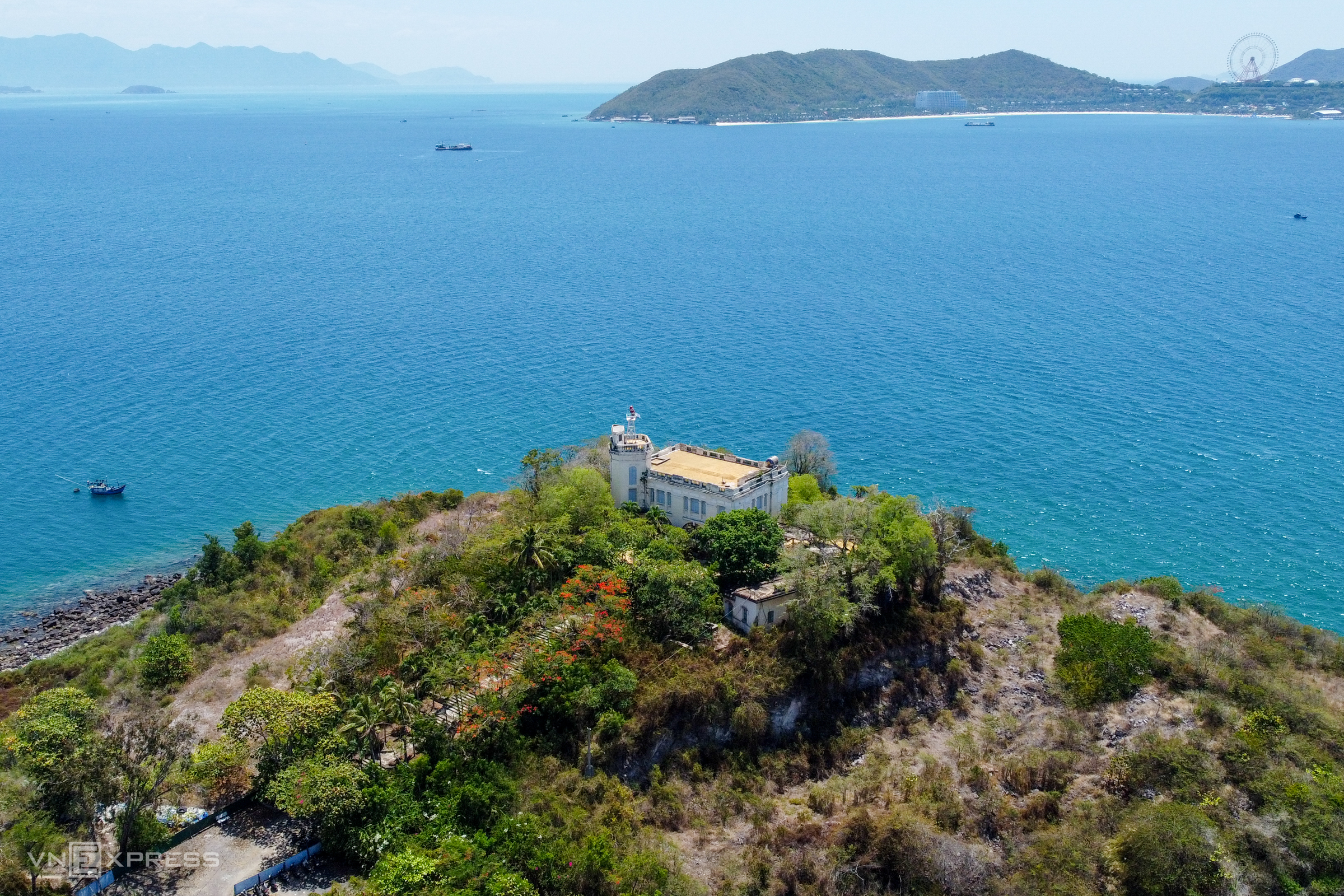 |
 |
The desolate scene at the Bao Dai complex contrasts sharply with the bustling activity of boats and tourists in 2013. (Photo: Bui Toan)
Bui Toan



